AR for Community Colleges: Phases
Implementation
All necessary steps for successful program launch and ongoing learner support.

Upon program launch, the orientation session should provide an overview of AR’s value, explain the platform logistics, and establish a sense of community among the learners.
An effective onboarding session will accomplish the following goals:
Community Building:
-
To support learners without prior experience in AR training, program champions should take advantage of the onboarding session to create a sense of community and establish open communication. Our partners that built a cohort experience saw strong retention outcomes.
-
Using the orientation session as a platform for networking among learners encourages them to lean on one other, which provides support beyond the instructor.
Material Download and Technology Demonstration:
-
To ensure that learners are set up for success with both in-person and asynchronous learning, use orientation time to assist learners in accessing and downloading materials and provide a technology demonstration to give them a sense of how the platform looks and feels (e.g., a brief walkthrough of an AR product’s creation).
Comprehensive Understanding of AR:
-
The orientation session serves as another opportunity to provide participants with a grounding in AR’s diverse applications. Demonstrating AR’s use beyond the common example of social media filters proved essential to learner buy-in for many of our partners. Depending on learner interests, partners exhibited use cases for construction, UX design, health care, and the arts, to name a few.
Learner Engagement
Our partner program champions and their learners identified the critical need for consistent in-person support, since most learners will be encountering AR for the first time. Recognizing this need, instructors should establish regular student touchpoints. For example, Kingsborough Community College conducted a three-hour class on Saturdays for weekly instruction, augmented by opportunities for weekly virtual office hours at varying times. For its part, Southeast Kentucky Community and Technical College, whose opportunities for traditional in-person sessions were limited by its rural location, implemented a virtual two-session structure: one session per week dedicated to the delivery of a lesson, and a second session serving as a practice day, during which students received guidance from both the instructor and their peers as they engaged with assignments live.
All partners emphasized that showcasing AR’s versatility throughout the programming by connecting curriculum content to a range of AR applications at every appropriate step was an important aspect of their retention strategy.
Wraparound Supports
Program champions should aim to provide population-specific wraparound supports that address barriers to access and that can ensure high program retention rates across learners from all backgrounds. In the context of non-credit embedment, supports encompass a wide range of services, including access to child care, food pantries, and transportation services, in addition to other logistical assistance. For instance, at Mott Community College, non-credit learners received in-person assistance with class registration through virtual signup days, which ensured a smooth experience for those less familiar with the college and its processes. At Isothermal Community College, where evening courses were held to accommodate learner work schedules, the food pantry provided many students with dinner so that hunger would not keep them from being fully engaged in learning.
Wraparound supports also can include professional development opportunities relevant to programming, such as resume writing and LinkedIn profile development to prepare learners to showcase and verbalize their AR skills to external audiences. For further professional development, Mott Community College employed campus career navigators to support learners in marketing their new AR skills and navigating job boards.
To assess your learners’ needs, encourage them to take a survey before the start of training.

Closing events, wherein learners can present to local employers their final AR projects, designed around employer needs, serve to engage the local community, relevant community college stakeholders, families, and policymakers, with an eye toward program sustainability and a workforce integration strategy for learners.
Community colleges can apply two distinct approaches to their closing event: using it as an educational opportunity for employers who are new to AR, which can shift the power dynamic so that employers are seeking knowledge from learners; or inviting local employers who regularly use AR, which can foster a direct connection between learners and informed industry professionals.
Final projects present further opportunities for developing skills that are both tangential to XR exploration and necessary for high-quality jobs in a range of fields. At Red Rocks and Mott, program champions added entrepreneurial and project management elements to final project assignments, asking students to create pitches/project proposals, budgets, and project plans for their AR products, which replicated real-world scenarios for learners seeking to monetize their AR skills.
As regional economic engines and hubs, community colleges are well positioned to serve as the central point for any region’s XR workforce strategy, and closing events can further this goal. More than a way to signal learners’ achievements in gaining skills to help them enter quality jobs, closing events also are a promising stakeholder engagement model for future iterations of XR programming, one in which all players in a workforce development ecosystem are involved in creating and training for quality jobs.
Insights from the Field on Coordinating Closing Events:
- Establishing proactive connections with employers and policymakers at least four weeks ahead of the closing event ensures a well-coordinated and impactful collaboration.
- Collaborating closely with employers to craft final projects that are tailored to their business needs enhances real-world relevance and enriches the learning experience.
- Extending invitations to faculty and administrators for the closing event cultivates enthusiasm and buy-in for the continuation of AR programs within the school.
- Instituting a judging panel for projects, accompanied by clear rubric examples, ensures a structured and fair evaluation process, elevating the overall quality of the closing event.
- Offering potential prizes for learner participation and celebrating individual achievement adds an extra layer of motivation.
- Two learner final projects can be viewed here and here.
- More sample AR student projects, along with assignment parameters, are included in the resources section.
Our community college partners experienced some challenges in common, such as instructors who struggled to get up to speed with new curriculum or who didn’t have specific technical expertise, along with the need for frequent platform updates, because AR is evolving at a rapid rate. While no easy solutions exist for overcoming these tech hurdles of first-time programs, our partners agreed that it is helpful to go in expecting that such issues will arise and to approach the program with a flexible, problem-solving mindset.
Some partners cited attrition and engagement issues, specifically for predominantly virtual programs, with rural partners noting challenges with monitoring student progress. To counter attrition and disengagement, programs must strike a balance between fostering an organic learning experience and implementing mechanisms for grading and supervision. Using learning management systems such as Blackboard or Moodle can help track engagement. Remember that the more relevant the programming is, the more learners will be engaged, and that supporting learners to be fully present also contributes to success. With virtual programming, providing space for learners to ask questions (before or after lessons or during virtual office hours) allows the instructor to hear about learner challenges without the learners having to call attention to themselves.





